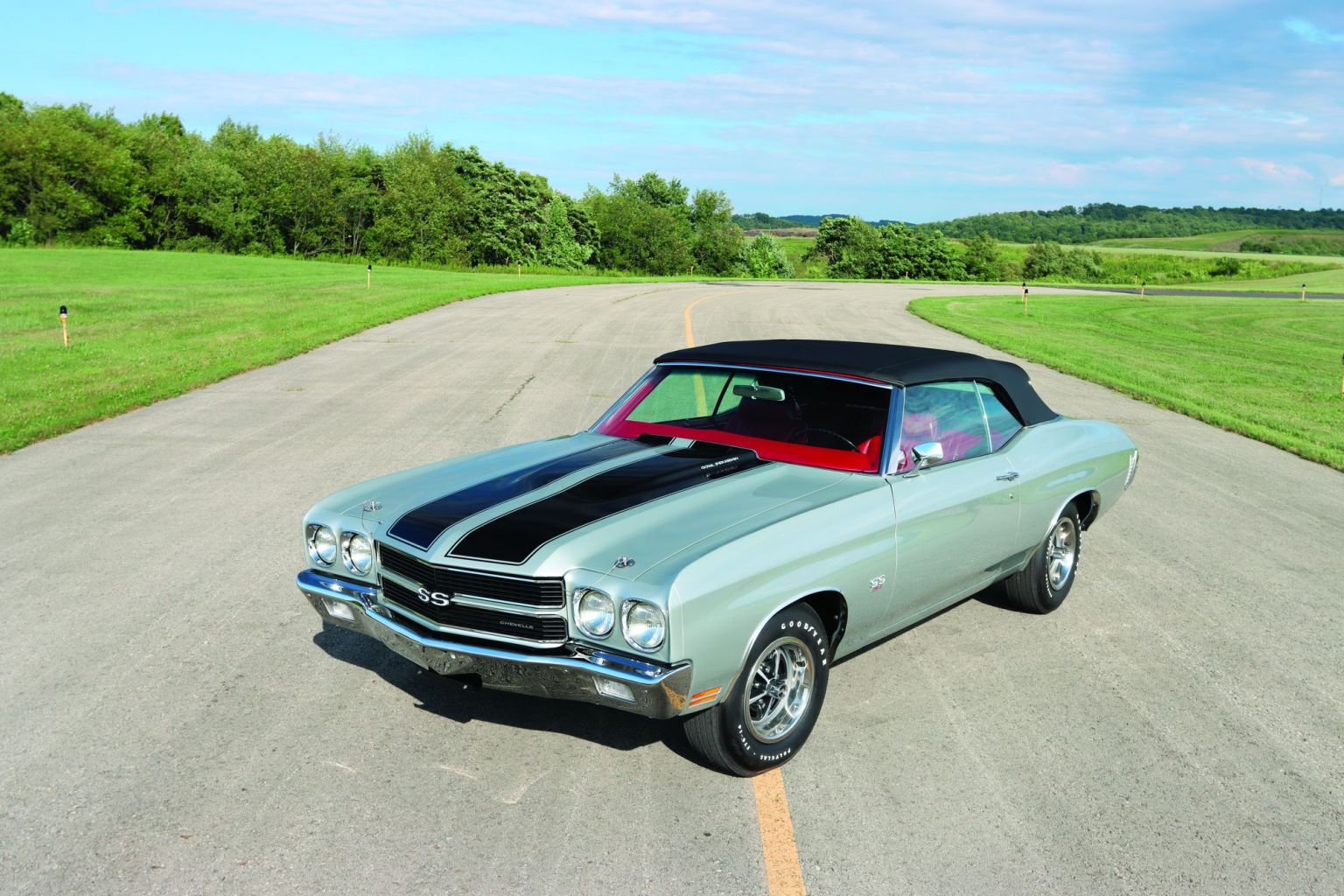The 1970 Chevrolet Chevelle LS6 is a symbol of the golden era of American muscle cars. This model, equipped with a 454-cubic inch LS6 engine, was engineered for raw power and performance. With rectangular-port heads, forged internals, and a Holley 780-cfm carburetor, it was built to dominate the streets and the drag strip alike. Chevrolet officially rated the LS6 engine at 450 horsepower, which was an astonishing figure at the time and made it one of the most powerful production cars of the era. Its aggressive stance, bold design, and unparalleled performance have made it a legend in the automotive world. Today, these cars are highly sought after by collectors and enthusiasts alike, with values continuing to rise as their rarity becomes more evident.

The Rarity of the LS6 Convertible
Among the 4,475 LS6-powered Chevelles produced in 1970, the convertible version remains an extreme rarity. Due to Chevrolet’s incomplete record-keeping, the exact number of LS6 convertibles manufactured remains unknown. However, estimates suggest that somewhere between 17 to 50 units were built. Of those, fewer than 25 are believed to have survived over the decades, making them some of the most coveted muscle cars in existence. What makes this particular LS6 even more special is its unique Cortez Silver exterior combined with a striking red interior. This specific combination makes it a true one-of-a-kind vehicle, adding to its desirability among collectors. Given the high performance of these cars, many were driven hard and modified, reducing the number of original surviving examples even further. The rarity and historical significance of the LS6 convertible make it a prized possession for any serious muscle car enthusiast.

History and Restoration Journey
Fred Cini, a lifelong car enthusiast from Ontario, Canada, had long admired the LS6 Chevelle. Having owned a four-speed Astro Blue LS6 coupe in his youth, he had always dreamed of acquiring a convertible version. In 2018, while browsing an online auction, he stumbled upon this extremely rare Cortez Silver LS6 convertible. Recognizing its significance, he decided to make the purchase. However, upon closer inspection, it became evident that the car was not entirely correct. It had undergone a prior restoration in 2006, but many of its components were incorrect or reproduced rather than original. The steering wheel, distributor, and alternator were all non-authentic parts, and the body panels did not align properly. Understanding the importance of authenticity, Fred made the bold decision to completely restore the vehicle to its factory-original state, ensuring that every detail matched Chevrolet’s 1970 specifications.

The Restoration Process
To achieve an impeccable restoration, Fred enlisted the expertise of two renowned restoration shops: MuscleCar Restorations (MCR) in Pleasant Plains, Illinois, and Super Car Restoration (SCR) in Clymer, Pennsylvania. The restoration process was meticulously coordinated, with different phases of the work being completed at each location. The frame and mechanical components were handled at MCR, while SCR took charge of the bodywork and painting. The logistics of transporting the car and parts between these shops required precise planning, with exchanges taking place in Ohio, a midpoint between both locations. Despite the geographical challenges, this partnership ensured that each aspect of the car was restored by specialists with extensive knowledge and experience. Over the next few years, Fred and his team embarked on an arduous yet rewarding journey to bring the LS6 convertible back to its original glory.

Bodywork and Refinishing
The restoration of the body began with a complete stripping of the paint down to the bare metal. Using a DA sander, Jamie Cooper at SCR meticulously removed the previous layers, while the floors were sandblasted for a clean slate. Fortunately, the body was in relatively good shape, but there were still imperfections that required attention. One of the major issues was the excessive use of filler from the previous restoration, which had to be removed to ensure a more accurate and authentic finish. Only the decklid required full replacement, but every other panel was carefully realigned to achieve factory-perfect gaps. Once the metalwork was completed, the car underwent an extensive refinishing process, utilizing premium PPG Envirobase waterborne paint and a meticulous multi-layer sanding technique. The final result was a deep, mirror-like Cortez Silver finish, making the car appear as though it had just rolled off the showroom floor in 1970.

Engine and Drivetrain Restoration
The heart of this LS6 Chevelle is its 454-cubic inch big-block engine, which was carefully rebuilt by Jeff Mackay of Mackay Engines in Rochester, Illinois. The block, originally cast in November 1969, had been previously decked during a past rebuild, which meant it was missing its original factory code. Despite this, the rebuild was executed with absolute precision, maintaining the engine’s 11.25:1 compression ratio and ensuring it performed exactly as Chevrolet intended. The only modification was a .030-inch overbore, which had no impact on performance. When tested on the dyno, the rebuilt LS6 produced 460 horsepower at 5,400 RPM—ten more than Chevrolet’s original advertised rating. Completing the drivetrain was a rebuilt TH400 transmission, restored to perform identically to its factory specification. To maintain the car’s authenticity, Fred ensured that no modern upgrades or modifications were added, preserving its pure 1970 muscle car essence.

Chassis and Suspension Details
The restoration team took great care to preserve the factory-original suspension setup, utilizing Chevrolet’s heavy-duty F41 suspension package. Unlike many restorations that incorporate modern enhancements for improved handling, Fred opted to retain the car’s original driving characteristics. NOS (New Old Stock) parts were sourced whenever possible, including ball joints and shock absorbers. The factory AO-code 14×7-inch wheels were refinished and wrapped in period-correct Goodyear Polyglas F70-14 tires, ensuring that every aspect of the car remained true to its original factory specification. With all the mechanical components restored, the LS6 convertible was finally ready to reclaim its former glory on the open road.

